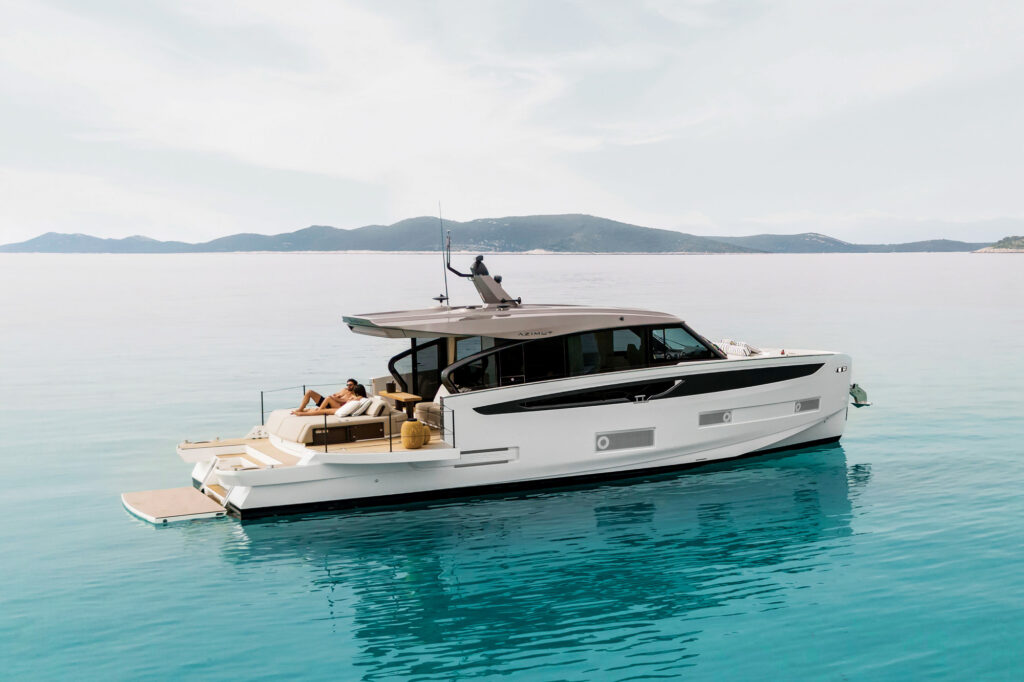
There’s only so much any builder can do to create a sustainable planing yacht with hefty diesel power. Azimut Yachts has achieved more than most with its 57-foot Seadeck 6, the first and smallest model in a range of environmentally minded craft.
The Seadeck concept has a back-to-nature philosophy that includes ethically sourced and recycled materials, and a cleaner, softer aesthetic with the sea as the focus. Put another way, the Seadeck has a “green heart,” according to Giovanna Vitelli, president of the Azimut-Benetti Group and daughter of Paolo Vitelli, who founded Azimut Yachts in 1969. The 72-foot Seadeck 7 is premiering at the Cannes Yachting Festival this autumn, and the 84-foot Seadeck 9 is expected to launch in about 18 months.
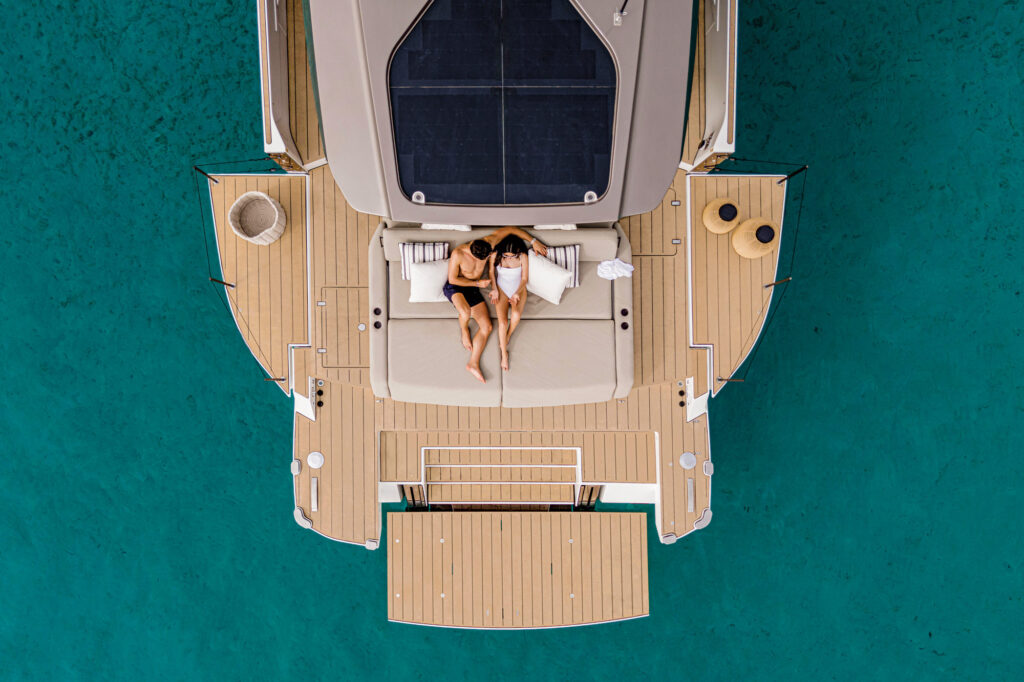
I caught up with the Seadeck 6 in Venice, Italy. The yacht’s deep-V hull form comes from Italian naval architect Francesco Rogantin’s Names studio. Exteriors are the work of Monaco-based Alberto Mancini, who is evolving Azimut’s full-range DNA. Mancini says the design emphasis for Seadeck models is openness and transparency. Wellness is the focus of the yacht’s interiors, which are from Italy’s Studio Matteo Thun and Antonio Rodriguez.
While the Seadeck 7 and Seadeck 9 have full-hybrid installations—electric motors will be able to propel them—the Seadeck 6 does not have electric motors. It can, however, function in zero-emissions mode for up to eight hours with systems running, including the Seakeeper gyrostabilizer. There are several means of charging the high-voltage 40 kWh Torqeedo battery pack: the Mase generator, the shaft generator on the port engine, two alternators to starboard, and the 1.4 kWp of solar panels on the coachroof.
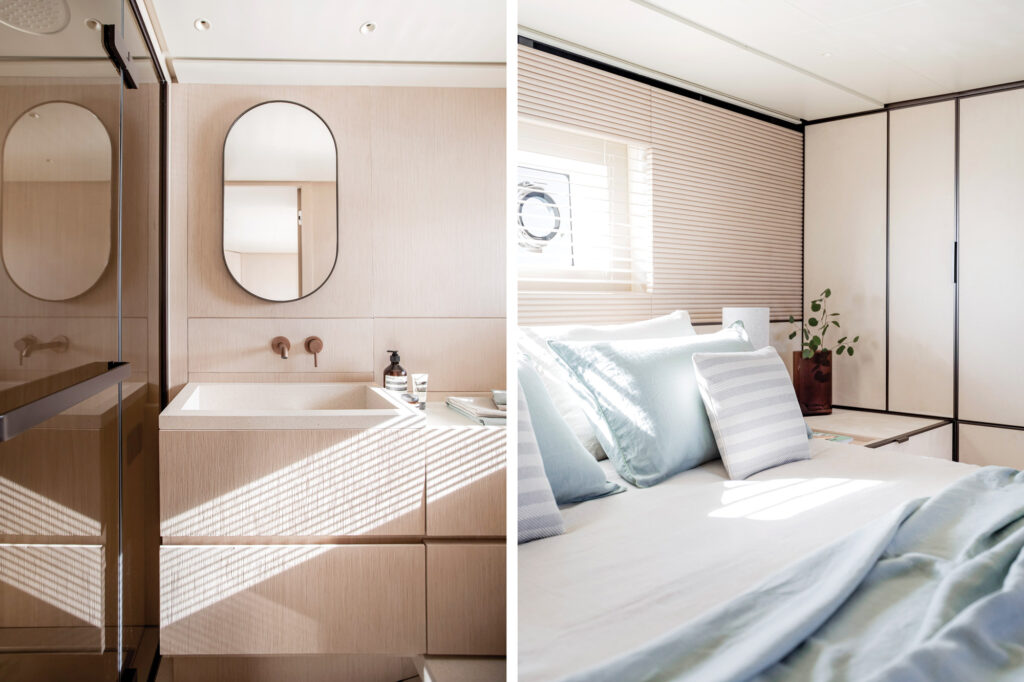
The Seadeck series, like all Azimuts, is built with a significant amount of carbon fiber to reduce weight. The hull is 100 percent fiberglass, while around 40 percent of the Seadeck 6’s deck and superstructure is carbon fiber, as are the fold-down quarters and hydraulic platform.
The stern area is a key design element on the Seadeck models. Effectively, it has a three-tiered terrace that connects the cockpit and main-deck interior with the water. The fold-down, fan-out idea is similar to the Oasis Deck concept that has proved successful at Benetti. Azimut calls this functionality Fun Island. On the Seadeck 6, one level is the swim platform, the second level holds the sun pad and fold-down sections, and the third level is the same as the main salon.
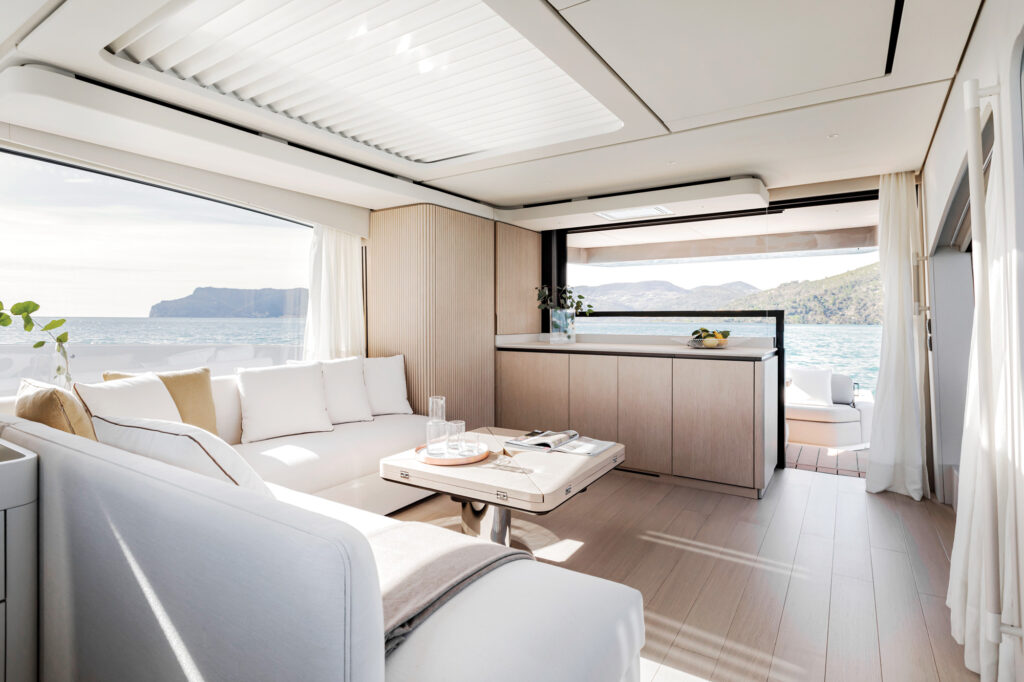
Light and airy is an overused phrase, but this yacht’s interior really is both. Sizable windows on all four sides and a sunroof coupled with mostly white-cream lacquers and upholstery bounce light into every corner, softening the natural shadowing. There’s also ribbed oak paneling, which diffuses light and should hold up to wear and tear. Fixed louvers break up the light above the main salon. At night, discreet spotlights and LEDs create softness.
Recycling is not just a token effort with the Seadecks either. Almost a third of the interior makes use of recycled polyethylene terephthalate (RPET) instead of PVC. Azimut says each Seadeck 6 uses material from around 15,000 plastic bottles. The optional Econyl carpets are made from recycled plastics, including fishing nets.
In terms of layout, the main salon has a galley aft. Induction hobs are in the worktops, making them effectively invisible, as is just about everything else when it’s not in use. Beyond the amidships lounge with a corner sofa are a square, quad-leaf pedestal table to starboard and a walkway to port. The only area where technical equipment is in open view is the helm console to starboard. It has two Aras bucket seats.
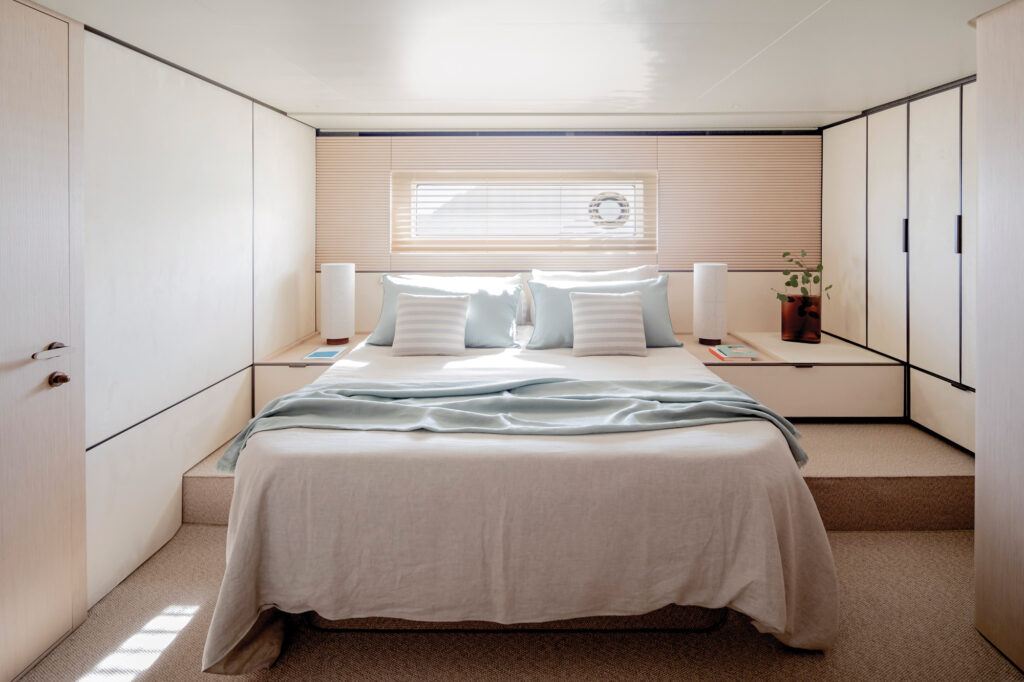
Pulling the Seadeck 6 along are either triple 380 hp Volvo Penta D6-IPS500s or 480 hp D6-IPS650s. Azimut quotes maximum speeds up to 33 knots and cruise speeds up to 24 knots.
The Seadeck 6 that I was aboard had the bigger engines and was at a little under half-load. The best speed we saw was 30 to 31 knots with the Seakeeper off and trim assist on. If we manually trimmed, the Seadeck 6 hit just north of 32 knots. At 3,500 rpm and 28 knots, range would be around 310 nautical miles. In the 22-to-27-knot zone, range drops to about 280 nm. At 10 knots, it increases to about 480 nm. Handling is well-mannered and visibility is good, save for the usual blind spot or two aft.
Accommodations belowdecks include three staterooms. The en suite owner’s stateroom is amidships with an inboard-facing double berth to starboard and a sofa to port. A VIP stateroom with an aft-facing double berth is in the bow. Its en suite has a Jack-and-Jill door for guests in the twin-berth stateroom. A single crew cabin is beneath the cockpit sole. Hull No. 1 has this area configured as an electrical systems space.
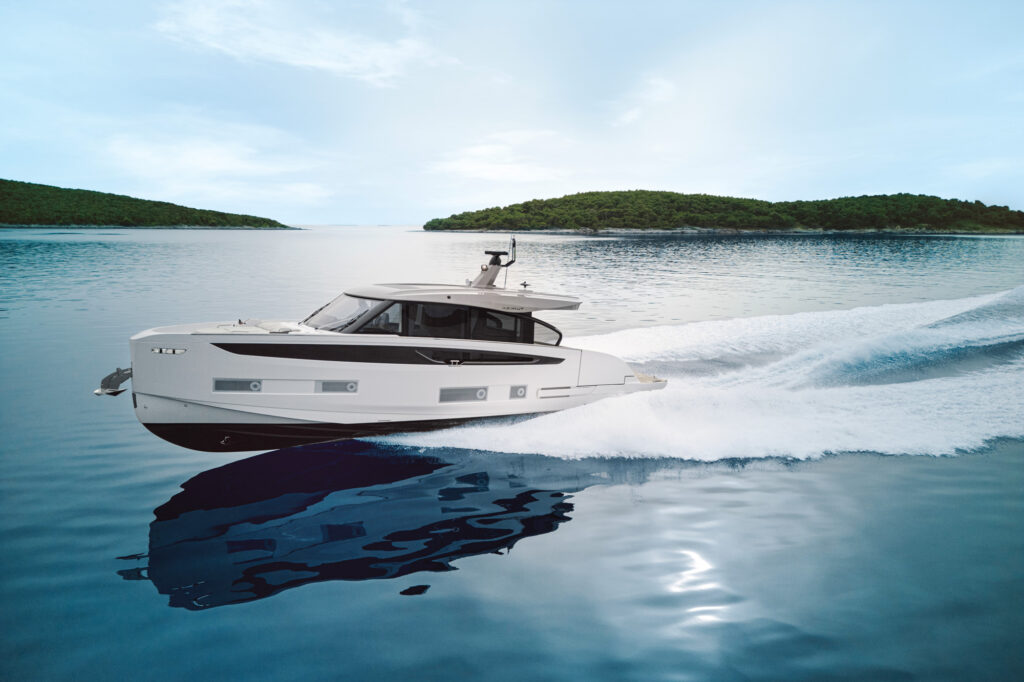
For yacht owners who want to cruise in a more sustainable way, the Azimut Yachts Seadeck 6 offers that option without sacrificing performance and luxury.
Water, Water, Everywhere
We got aboard the Seadeck 6 during Salone Nautico Venezia 2024. This event is held at the Arsenale, a historic industrial complex and naval dockyard that mass-produced the ships that made Venice, Italy, a maritime trading superpower centuries ago. Back then, it was the most prosperous city in Europe.
Yes, That’s Cork
Azimut’s Seadeck yachts have cork decks. This is a sustainable, bark-layer material that can be harvested regularly without killing the trees, which are native to southwest Europe and northwest Africa. It is impermeable, fire-retardant, elastic and buoyant, and it does not get as hot as teak in the sun. Durability remains to be seen, but replacement and repairs should be easier and cost-effective. Given that there’s no real grain to match, grafts should be easier to blend as well. It feels soft and warm to walk on.
Hidden Screens
The Seadeck 6’s interior includes discreet TVs. The one in the main salon drops down from the headliner, while those in the staterooms are concealed behind MagicMirrors.
Take the next step: azimutyachts.com









